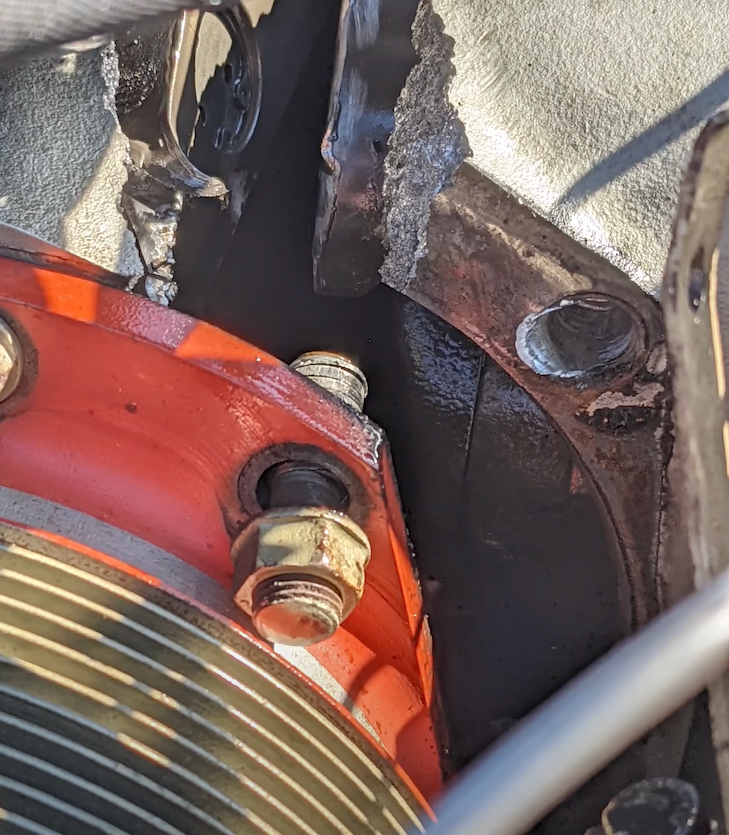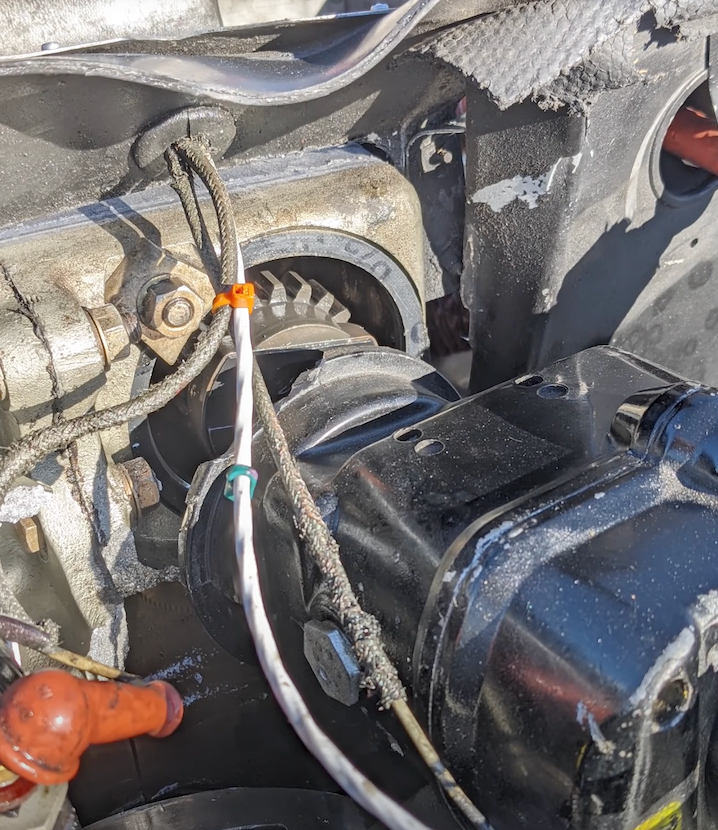C205 catastrophic engine failure
Thread Starter
Nice flying, nice day.
A close call? Maybe in different hands, or even an accident. Cessna 205 catastrophic engine failure while flying on an IFR flight plan from S36 (Seattle, WA) to KMYV (Sacramento, CA) Cruising at 9,000 feet. IO-470-S engine suddenly vibrated and then immediately exploded, stopping the propeller instantly. Glide and divert to KHIO (Hillsboro, OR) captured on a GoPro Hero. ATC audio partially from LiveATC.net. No word yet on cause of failure, photos at the end of the video show the damage.
Join Date: May 2004
Location: Bear Island
Posts: 598
Likes: 0
Received 0 Likes
on
0 Posts
There are photos on the blancolirio channel, also on Youtube.
Catastrophic failure of cylinders 4 and 6, the entire aft end of the crankcase sheared off.
What caused that failure is of course, subject to further investigation.
TR
Catastrophic failure of cylinders 4 and 6, the entire aft end of the crankcase sheared off.
What caused that failure is of course, subject to further investigation.
TR
That looked really well judged and controlled. I'm certain I couldn't have done nearly as well. And clearing the runway, what's more. I'm seriously impressed by this guy's skill set.
Screen grabs from the end of the video:





It looks like only the rear cylinders were affected - conrod failure?





It looks like only the rear cylinders were affected - conrod failure?
An interesting failure, that's for sure. Nicely handled as well. The final approach looked quite flat to me but from the shadow I am guessing he didn't have any flaps out and carried a bit of extra speed.
Flaps likely electric; so how much could the battery offer after transponder and turn coordinator had been draining for several minutes?
Plenty of extra speed yielding long float and ground run on a long runway. Better too fast than too slow.
Oh yes, in some large Cessna singles, extended flaps can block the doors.
Plenty of extra speed yielding long float and ground run on a long runway. Better too fast than too slow.
Oh yes, in some large Cessna singles, extended flaps can block the doors.
Good point, I forgot about the rear door, but I didn't spot one on the photo at the start of the video. He had 6600 feet available so I can't fault him for keeping the speed up.
Join Date: May 2003
Location: Canada
Posts: 111
Likes: 0
Received 0 Likes
on
0 Posts
Looking at the video, there is a glimpse of the airspeed indicator in sunlight that shows 105-110 knots while crossing the runway threshold (I took a screen capture and contrast enhanced to be able to read it). So his final approach was indeed flat but he had plenty of energy to bleed off.
Last edited by Machdiamond; 3rd Mar 2022 at 00:12. Reason: typo
Well done, indeed, textbook engine-out glide to landing.
FWIW, I don't believe the 205 has the big rear cargo door that can get stuck with flaps down (like the 206), and, the airspeed indicator probably reads in mph, but, plenty of speed on final, either way.
FWIW, I don't believe the 205 has the big rear cargo door that can get stuck with flaps down (like the 206), and, the airspeed indicator probably reads in mph, but, plenty of speed on final, either way.
Moderator
I don't believe the 205 has the big rear cargo door that can get stuck with flaps down (like the 206)
Being "too fast" on final for a power off landing is about the least thing to be concerned about if something can't be perfect, the worst is you go off the far end having slowed down a lot, which is much better than hitting whatever at flying speed short of the runway!
Is correct. The 205 has two front doors, and a smaller left side exit about the size of an airliner overwing exit.
Being "too fast" on final for a power off landing is about the least thing to be concerned about if something can't be perfect, the worst is you go off the far end having slowed down a lot, which is much better than hitting whatever at flying speed short of the runway!
Being "too fast" on final for a power off landing is about the least thing to be concerned about if something can't be perfect, the worst is you go off the far end having slowed down a lot, which is much better than hitting whatever at flying speed short of the runway!
I don't think anyone is saying he was "too fast"
I think people have observed that he kept a lot of speed to the threshold which gave him options if he felt he was dropping short and he had plenty of space to wash off the speed. Perfectly sensible given the runway length.
First time i watched it i thought he was cutting it very fine in coming in so flat to the threshold then i realised how much speed he had kept and changed my view.
Top job i think.
Supporting evidence is that Continental rear cylinders, unlike Lycoming, are numbered 1 and 2.
Well I wasn't going to but I will now. It was my impression from watching the whole sequence that he was well above best glide speed, only made it to the airport because it was well within max glide range, and made a rather poor job of speed control and pattern planning.
I will of course be shot down because the end result turned out fine. If a student of mine flew a simulated engine fail approach like that he'd be doing a few more till he got it right.
I will of course be shot down because the end result turned out fine. If a student of mine flew a simulated engine fail approach like that he'd be doing a few more till he got it right.
Thread Starter
In the military they describe the engine out pattern (altitudes, airspeed etc) to be flown in some detail, what do you teach EXDAC as a matter of interest.
Moderator
"Best glide speed" is the speed at which the airplane will achieve the greatest distance over the ground for altitude lost. for some airplanes, a comfortable power off approach speed will be faster. At least it will give you some reserve for an imprecise flare, which can happen under the stress of an actual engine failure. Crossing the numbers 10 -15 knots fast is generally manageable, particularly if it's planned. I was training this last week, with a good slip held right over the numbers (flapless plane). I won't criticize a pilot who makes a successful forced landing. Sure, we could all armchair it to have been better, and learn to be better ourselves, so let's do that too. For me, cross the numbers power off at "best glide speed" may be on the less comfortable side of safe, for a pilot who's not right up on the type. When your flares are judged and timed with excellence, consider flying best glide speed into the flare.
By the way, the flapless type I mentioned does have a remark in the flight manual about increasing speed above glide speed for a power off landing.
By the way, the flapless type I mentioned does have a remark in the flight manual about increasing speed above glide speed for a power off landing.
Join Date: Nov 2004
Location: Here, there, and everywhere
Posts: 1,122
Likes: 0
Received 12 Likes
on
7 Posts
Well I wasn't going to but I will now. It was my impression from watching the whole sequence that he was well above best glide speed, only made it to the airport because it was well within max glide range, and made a rather poor job of speed control and pattern planning.
I will of course be shot down because the end result turned out fine. If a student of mine flew a simulated engine fail approach like that he'd be doing a few more till he got it right.
I will of course be shot down because the end result turned out fine. If a student of mine flew a simulated engine fail approach like that he'd be doing a few more till he got it right.
But the question is, in terms of the quoted post above,........if you are close to a long runway available with plenty of altitude, is there really a need to maintain best glide speed if you have more than enough time? Perhaps one need only target the best glide speed when there is an actual reason to target it.
Best glide speed prevents one from wasting energy that is needed now or may be needed later. What if you have a large excess of energy and you know that you will never need it?



